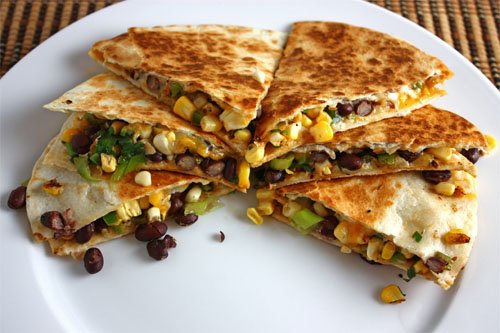Finding Your Perfect Running Pace
When you run within your limits, every workout can be a pleasure. But start even a few seconds per mile too fast, and misery awaits: excess fatigue, loss of motivation, or even injury. That’s why it’s so important to know what pace is right for you. Happily, by doing a simple “magic mile” time trial, you can find the best speed for your runs, then set realistic goals and keep running—enjoyably—forever.
Run One Mile Hard Go to a track and jog an easy lap or two for a warm up. Walk for three to four minutes. Then time yourself running four laps, which is about one mile. Don’t run all out; just push a little faster than you usually do. Record your time. By running on a track—which is flat and provides the most accurate measurement of distance—you’ll get a solid indication of your top speed. You can use it as a benchmark to determine what pace is appropriate for your current fitness level on daily runs. Do the time trial every two weeks or so; try to beat your previous time, and track your progress.
Slow Down Every Day On your daily runs, aim to run two to three minutes slower per mile than your magic mile time. So if you do your magic mile in 10 minutes, aim to keep your pace around 12 to 13 minutes per mile on daily runs. At the perfect pace, you should feel comfortable and relaxed—like you can finish a sentence without having to catch your breath. If you’re huffing and puffing, ease off. Don’t worry about going too slow.
Set Race Goals Signed up for a race? Use the magic mile to set realistic goals for different distances. Add 33 seconds to your mile time to determine a pace for a 5-K. Multiply your mile time by 1.15 for a 10-K, 1.2 for a half-marathon, and 1.3 to predict your marathon potential. (See “Time Trial,” below.)
Get Used To It At a race, you’ll get the best results if you try to maintain a steady pace from start to finish. Here’s how to practice: Once a week, try to run your goal race pace for a half to three-quarters of a mile. Each quarter mile, check your pace and adjust if you need to. Each week, run a little farther at your goal pace until you’re running one-third to one-half of the race distance.
Time Trial
f you can run one mile in 10 minutes, here’s your pace for other distances.
Distance: 5-k
Pace per mile: 10:33
Distance: 10-k
Pace per mile: 11:30
Distance: half-marathon
Pace per mile: 12:00
Distance: Marathon
Pace per mile: 13:00
Source: Runnersworld.com
Should You Go Nuts?
Nuts are nature’s way of showing us that good things come in small packages. These bite-size nutritional powerhouses are packed with heart-healthy fats, protein, vitamins, and minerals.
Here’s a look at the pros and cons of different nuts, as well as the best and worst products on supermarket shelves today. Of course, you can get too much of these good things: Nuts are high in fat and calories, so while a handful can hold you over until dinner, a few more handfuls can ruin your appetite altogether. And although nuts are a healthy choice by themselves, they’ll quickly become detrimental to any diet when paired with sugary or salty toppings or mixes.
Best Nuts For Your Diet
All nuts are about equal in terms of calories per ounce, and in moderation, are all healthy additions to any diet. “Their mix of omega-3 fatty acids, protein, and fiber will help you feel full and suppress your appetite,” says Judy Caplan, RD, a spokesperson for the Academy of Nutrition and Dietetics.
The lowest-calorie nuts at 160 per ounce are almonds (23 nuts; 6 grams protein, 14 grams fat); cashews (16 to 18 nuts; 5 grams protein, 13 grams fat); and pistachios (49 nuts; 6 grams protein, 13 grams fat). Avoid nuts packaged or roasted in oil; instead, eat them raw or dry roasted, says Caplan. (Roasted nuts may have been heated in hydrogenated or omega-6 unhealthy fats, she adds, or to high temperatures that can destroy their nutrients.)
Worst Nuts For Your diet
Ounce for ounce, macadamia nuts (10 to 12 nuts; 2 grams protein, 21 grams fat) and pecans (18 to 20 halves; 3 grams protein, 20 grams fat) have the most calories—200 each—along with the lowest amounts of protein and the highest amounts of fats.
However, they’re still good nuts: The difference between these and the lowest calorie nuts is only 40 calories an ounce. As long as you’re practicing proper portion control and not downing handfuls at a time, says Caplan, any kind of raw, plain nut will give you a good dose of healthy fats and nutrients.
Best Nuts For Your Heart
While all nuts contain eart-healthy monounsaturated fats, walnuts (14 halves contain 185 calories, 18 grams fat, 4 grams protein) have high amounts of heart-healthy alpha linoleic acid (ALA), a type of omega-3 fatty acid found in plants. Research has suggested that ALA may help heart arrhythmias, and a 2006 Spanish study suggested that walnuts were as effective as olive oil at reducing inflammation and oxidation in the arteries after eating a fatty meal. The authors of this study, funded in part by the California Walnut Commission, recommended eating around eight walnuts a day to achieve similar benefits.
Best Nuts For Your Brain
Technically legumes but generally referred to as nuts, peanuts are high in folate—a mineral essential for brain development that may protect against cognitive decline. (It also makes peanuts a great choice for vegetarians, who can come up short on folate, and pregnant women, who need folate to protect their unborn babies from birth defects, says Caplan.) Like most other nuts, peanuts are also full of brain-boosting healthy fats and vitamin E, as well. One ounce of peanuts (about 28 unshelled nuts) contains about 170 calories, 7 grams protein, and 14 grams fat.
Healthy Living Tip:
Hang out with healthy people!
You’re the average of the 5 people you spend the most time with, so the more time you spend around healthy people, the better it is. Eat with people who are health conscious and get workout buddies. It makes healthy living even more fun!
Healthy Transformations

Ingredients:
2 ¼ oz cheese, cheddar – low fat
1 tortilla, corn
¼ cup beans, canned black
½ Tbsp avocado
½ tsp oil, high oleic safflower
¼ tsp salt
¼ tsp cilantro
Preparation:
Place tortilla in pan and grate cheese on top of tortilla. Layer remaining ingredients and spices on top of the cheese.
Cook over low to medium heat until cheese is melted and tortilla begins to get crisp. Fold tortilla and ingredients over onto itself.
Enjoy!
24g carbs, 20g protein, 10g fat, 4g fiber, 266 calories









